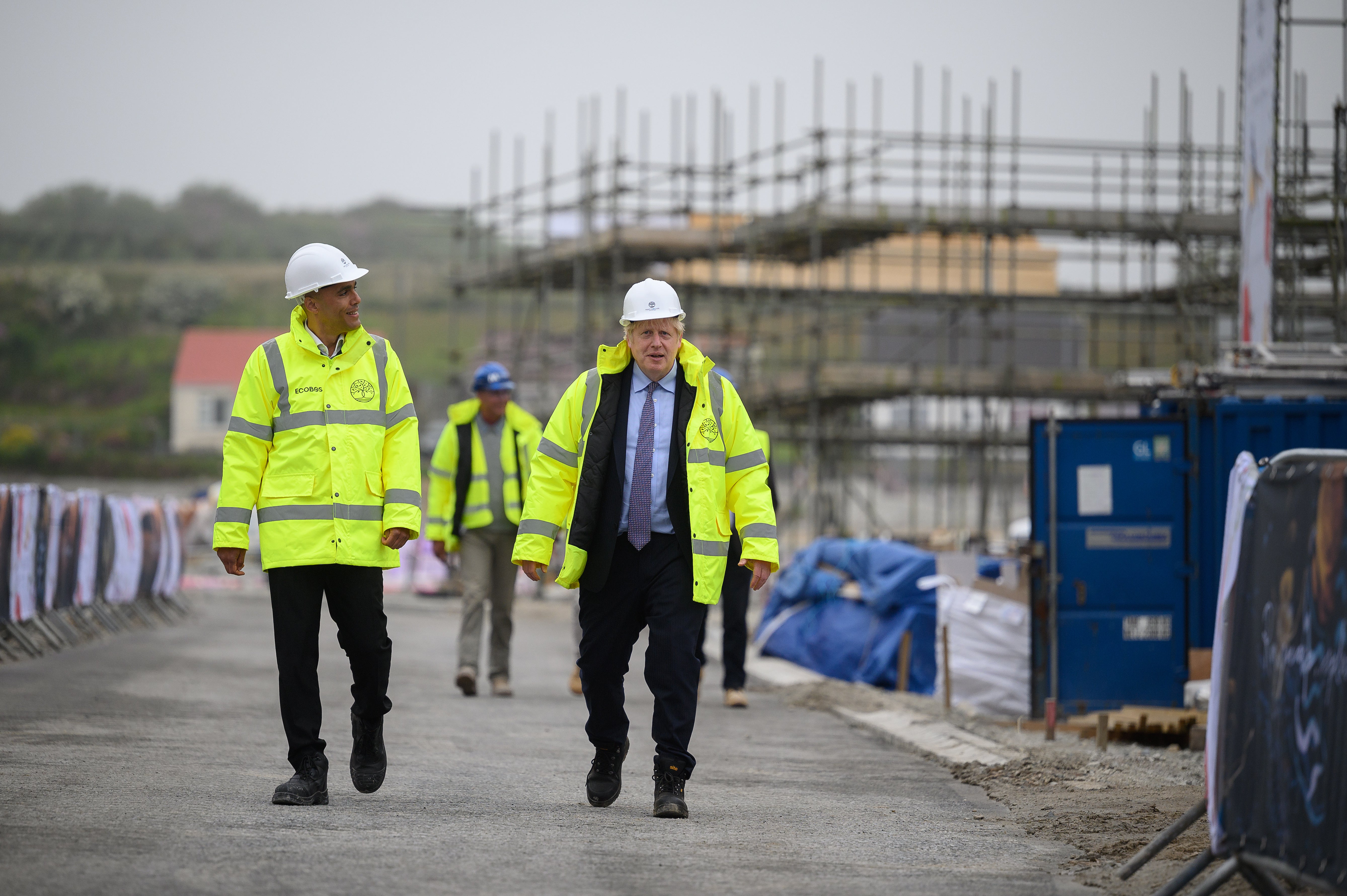UK’s ‘fragile’ economic recovery trails G7 peers
New data revealed that GDP is now only 4.4 per cent below where it was before the crisis hit in the latest sign that the UK economy is rebounding strongly from the pandemic. But, as Anna Isaac points out, we’re not out of the woods yet


The UK’s pandemic economic recovery is lagging that of its G7 peers, data suggests.
Britain’s economic output grew at a fast clip of 4.8 per cent in the three months to June, yet remained around 2 per cent lower than before the pandemic, according to the Office for National Statistics (ONS).
Comparing quarterly growth shows the UK’s economic output was still significantly lower than its pre-Covid peak in the final three months of 2019. This gap was greater than some of the world’s other wealthy countries.
In the three months to June, the US output was 0.8 per cent above its pre-pandemic peak in the final three months of 2019. Britain’s European neighbours, France and Germany, were only respectively 3.3 per cent and 3.6 per cent short of staging a full recovery in the second quarter, compared to 4.4 per cent off a pre-pandemic peak in the UK.
Overall the data offered good news, “but recovery remains fragile” said Yael Selfin, chief economist at the UK arm of consultancy firm KPMG.
“However, there are signs that ongoing issues with supply chains and staff shortages are slowing the pace of recovery, causing momentum to halt prematurely before the economy reaches pre-Covid levels,” she added.
The figures come amid a debate among economists over how much support the Treasury and the Bank of England should continue to provide now that restrictions have been lifted. At present, the government is set to end its furlough scheme at the end of next month.
While some economists believe the Bank of England should cut its level of bond-buying, because it is adding fuel to price rises, others argue that the huge government interventions to support businesses have masked the underlying weakness of the economy and that it still needs a cushion.
Consumer confidence might need to recover in order to boost economic growth, some economists believe.
The UK was lagging behind G7 countries’ economic recovery because of “weakness in households’ spending” said Samuel Tombs, chief UK economist at Pantheon Macroeconomics. This measure was still 7 per cent below its level in the final three months of 2019 from in the second quarter of this year, despite a sharp quarter-on-quarter increase of 7.3 per cent.
Still, Ruth Gregory, senior UK economist at Capital Economics was more optimistic, saying the UK “may still surprise most forecasters by emerging from the pandemic without much scarring”.
Analysis: What’s really going on?
There’s a sense among economists that the UK’s output is recovering, but that the picture of what’s really happening with GDP won’t “get real” until autumn. There are a few reasons why but perhaps the most crucial is that some of the government’s economic life support mechanisms will soon come to an end, including furlough.
While the Bank of England reckons unemployment has already peaked, there are still concerns that bottlenecks in some sectors could be making the overall labour market look tighter than it really is. HMRC data shows there were 1.9 million workers still on furlough in June. More recent data from the ONS suggests the number of workers on furlough in recent weeks could be as low as 1.2 million, but the figures it used do not cover all industries.
There have also been major government-led efforts to mitigate the impact of the worst recession in centuries. Over the next few months, support such as payment deferrals on mortgages and stopping commercial landlords from evicting tenants in lieu of missed rent payments are being dismantled.
Fresh data from UK Finance, a lobbying group for banks and financial institutions, showed there were signs of mortgage arrears creeping up slowly in the three months to June. It said that the end of furlough might also impact figures.
And if data signals were not already hard enough to read based on unprecedented government intervention, there are more structural factors at play. Lots of commercial landlords who own retail space understand their sector is declining: you are not likely to evict a tenant who is struggling with rent if you know it’s unlikely that you can replace them (if, that is, you can’t switch its use to residential property). This could be masking the rate of business’ deaths.
It’s also not clear what the fate of the “sandwich economy” will be once summer holidays are over, more of the working-age population have both vaccines, and self-isolation rules change. At present, workers are reluctant to return to their offices at anything close to previous levels, data gathered by the Centre for Cities think thank suggests.
There were some headwinds for UK GDP growth even before the pandemic hit. Brexit will have made some imports more costly for businesses as they deal with extra processes. Some British employers also report difficulties in hiring workers into sectors that have traditionally relied on EU workers, who now face barriers to working in the UK.
But it’s not clear how big an impact on price rises and wage growth these factors will have in the coming months.
There are global issues, too. Supply constraints on inputs like semi-conductors (chips used in electronic devices) are pushing price growth up in the world’s largest economies, the US and China. That’s making it harder for the Bank of England, which sets interest rates, to work out how short-lived some recent increases in inflation might prove.
In sectors like construction, it now appears that shortages of supplies including timber, steel and cement were acting as a handbrake on output, according to the ONS.
A separate set of economic numbers out today from the ONS offer a reminder of how opening up the economy after restrictions isn’t like switching on a light. One in ten businesses were still not trading in early August. While that’s much lower than in January where three in ten firms were not operating, it’s still significant.
It’s an indication, if another were needed, that the next three months’ data will be crucial to work out what the economy really looks like, post-pandemic.






Join our commenting forum
Join thought-provoking conversations, follow other Independent readers and see their replies
Comments